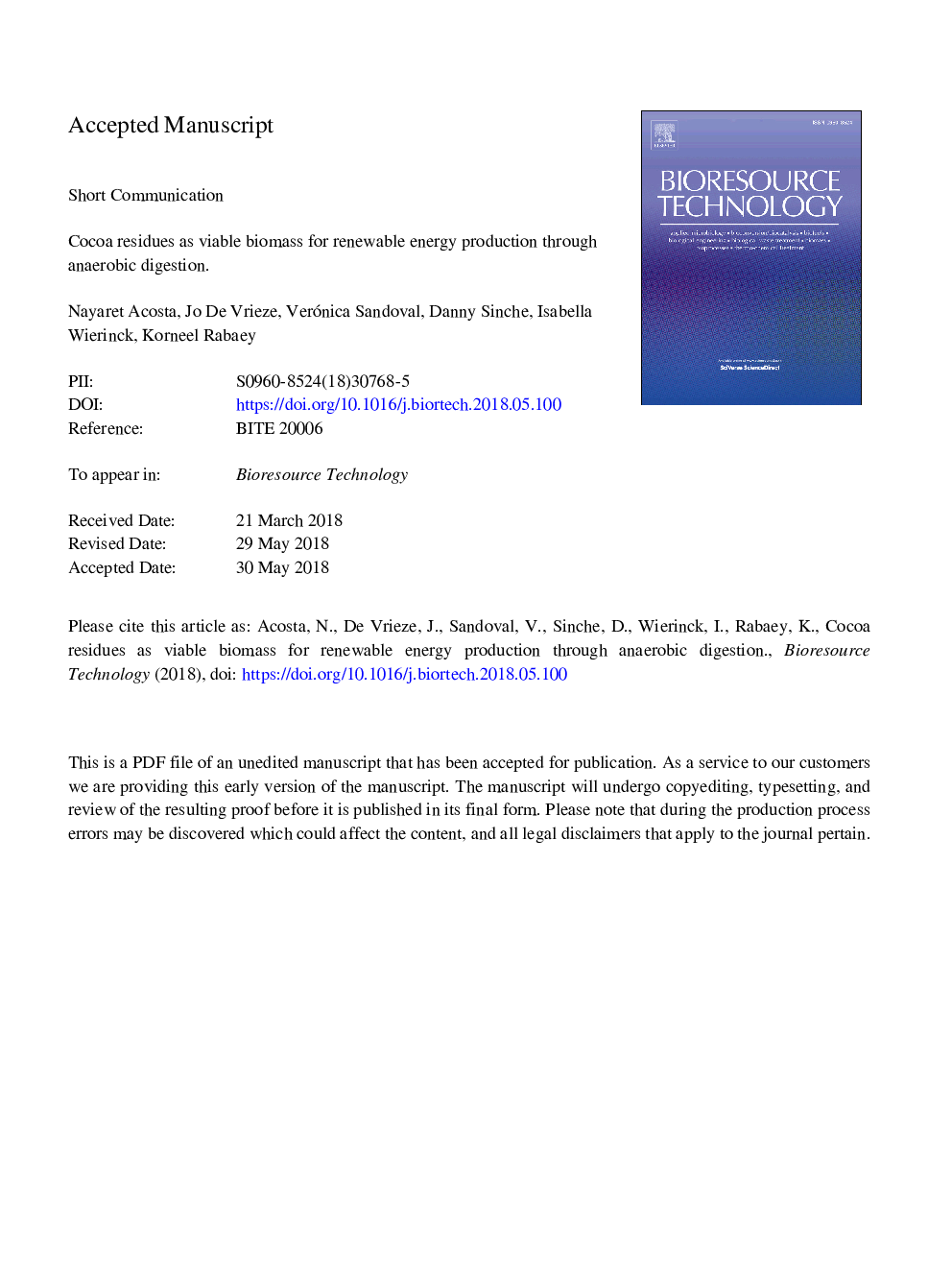| Article ID | Journal | Published Year | Pages | File Type |
|---|---|---|---|---|
| 7066294 | Bioresource Technology | 2018 | 17 Pages |
Abstract
The aim of this work was to evaluate the bioenergy potential of cocoa residue via anaerobic digestion. Batch and fed-batch lab-scale reactors were operated under low and high solids conditions. In the batch tests, 59â¯Â±â¯4% of Chemical Oxygen Demand (COD) was recovered as methane. This corresponded with an average methane yield of 174 (wet) and 193 (dry)â¯Lâ¯kgâ1 volatile solids fed, whereas a series of fed-batch reactors produced 70â¯Â±â¯24 (wet) and 107â¯Â±â¯39 (dry)â¯Lâ¯CH4â¯kgâ1 volatile solids fed during stable conditions. A case study was developed for canton Balao (Ecuador) based on our experimental data, operational estimates and available cocoa waste in the area. Annually, 8341â¯MWh could be produced, meeting 88% of the current electricity demand in Balao. This case study proves the potential for cocoa waste as a source of renewable energy in rural areas.
Related Topics
Physical Sciences and Engineering
Chemical Engineering
Process Chemistry and Technology
Authors
Nayaret Acosta, Jo De Vrieze, Verónica Sandoval, Danny Sinche, Isabella Wierinck, Korneel Rabaey,
